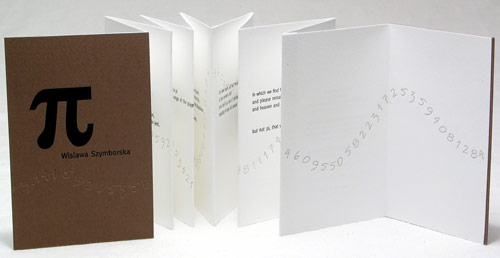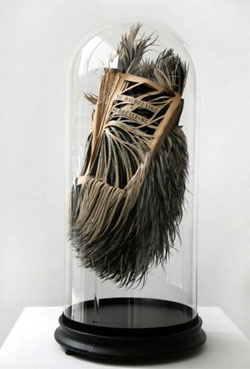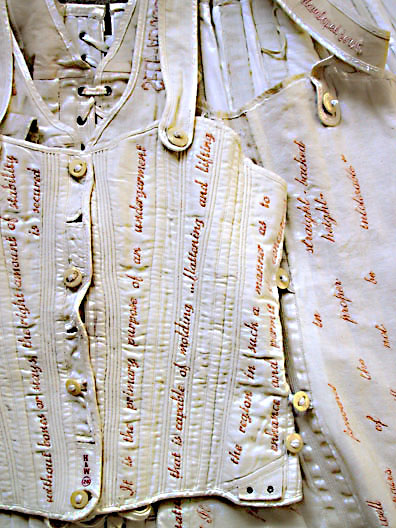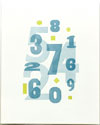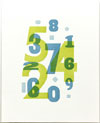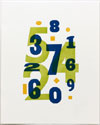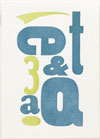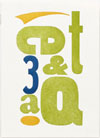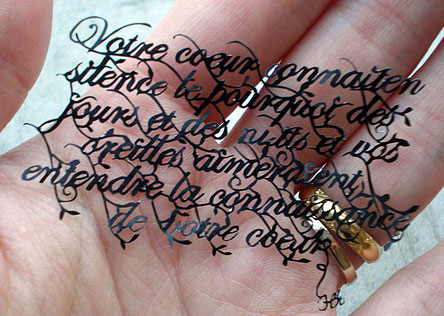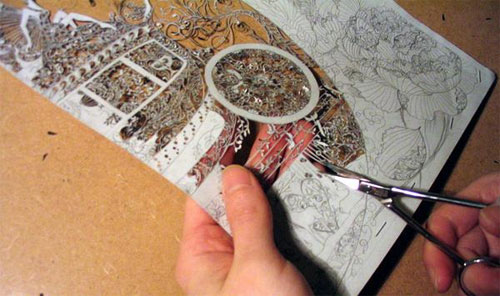Pi (π) is the symbol for the ratio of the circumference of a circle to its diameter. Pi is celebrated every year by math and number enthusiasts around the world this coming Saturday, March 14th.
![]() And what does π have to do with book arts or letterpress or type, you might ask? The first book I printed letterpress was a small artist’s book with Wislawa Szymborska‘s whimsical poem “Pi,” which juxtaposes the finite, impermanent world with the familiar never-ending sequence 3.1415926535… In my book the first 200 or so digits of Pi dance across the pages, starting on the cover and skating off the back.
And what does π have to do with book arts or letterpress or type, you might ask? The first book I printed letterpress was a small artist’s book with Wislawa Szymborska‘s whimsical poem “Pi,” which juxtaposes the finite, impermanent world with the familiar never-ending sequence 3.1415926535… In my book the first 200 or so digits of Pi dance across the pages, starting on the cover and skating off the back.
![]() In a toast to numbers and letterpress, I’m giving away a copy of my book. Just put a comment on this post by Sunday March 15th, and mention your favorite book with a number in the title or a number theme. I’ll pick a random name from the comments and announce the winner on Monday March 16th. My friend Richard, who suggested this question, told me his answers would be Life of Pi and A Tale of Two Cities.
In a toast to numbers and letterpress, I’m giving away a copy of my book. Just put a comment on this post by Sunday March 15th, and mention your favorite book with a number in the title or a number theme. I’ll pick a random name from the comments and announce the winner on Monday March 16th. My friend Richard, who suggested this question, told me his answers would be Life of Pi and A Tale of Two Cities.
![]() You can read Szymborska’s poem, which begins “The admirable number pi: three point one four one.“, here. There’s an official (!) web site for Pi day with all sorts of fun facts and quotes and pointers to YouTube videos. And here’s a link to my book.
You can read Szymborska’s poem, which begins “The admirable number pi: three point one four one.“, here. There’s an official (!) web site for Pi day with all sorts of fun facts and quotes and pointers to YouTube videos. And here’s a link to my book.

